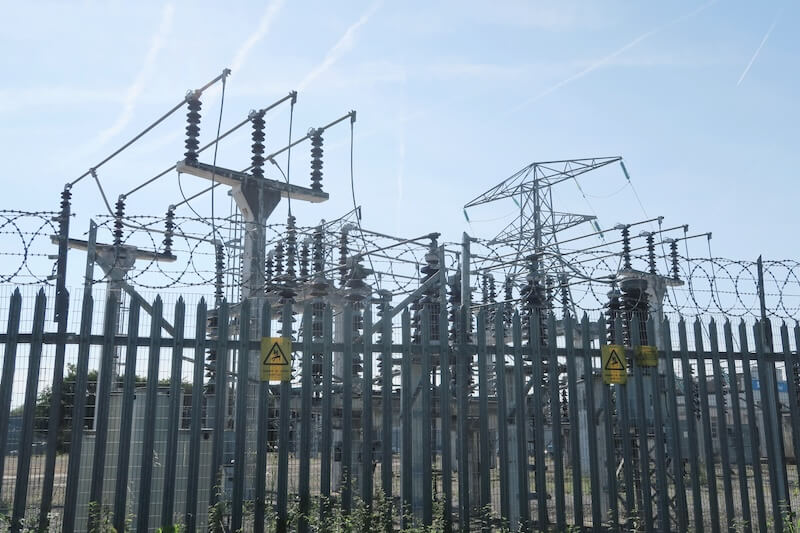1: Primary substation

This is the primary substation for Osney. This is where the pylons and overhead cables from the high voltage transmission network bring high voltage electricity into the distribution network, or grid edge, where we all connect.
Electricity is transmitted at a high voltage level across most of the electricity system as this reduces losses as it travels long distances. It then needs to be converted to a lower voltage for us to be able to use it. The primary substation is equipped with transformers that convert electricity from 132 kV voltage to 33 kV voltage.
Primary substations are strategically located near to the area which they serve. Equipped with advanced monitoring and control systems to manage the energy grid effectively, they ensure optimal distribution and minimise any downtime.
The capacity of the primary substation to supply electricity to the local area hinges on its size. As our demand for electricity increases as we switch to electricity for our heating and charging electric vehicles, the energy needed increases significantly. If we continue to add demand on the network without implementing more flexible strategies, it is estimated we would need our electricity system to be four times the size it is today. Alternatively, we could adopt more flexible approaches to the way we use, store, and generate electricity, to make more efficient use of our existing networks. This could help reduce the scale and speed of the reinforcement that needs to take place to our electricity system to enable the transition to net zero.
Reflective questions:
- Have you spotted your local primary substation in your local area?
- What impact would increasing the local electricity network infrastructure by four times have on your neighbourhood?
Reports and resources:
Understanding how flexibility at the grid edge could help accelerate the transition to a net zero energy system, reducing the need for disruptive and costly upgrades was a key aim of Project LEO (Local Energy Oxfordshire).
Want to learn more about way our electricity system works? Check out Electricity transmission and distribution networks for newbies
Learn more about the grid edge from primary substation to behind the meter in our homes in Low Carbon Hub’s video tour of the Energy System:









